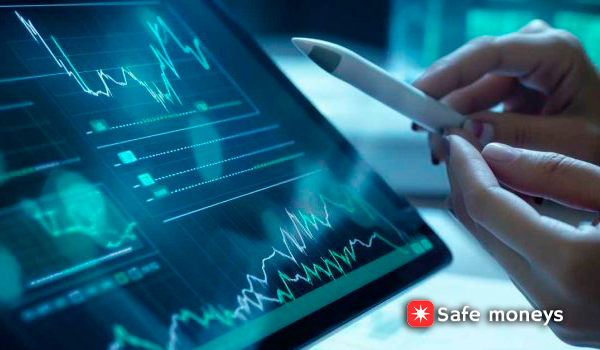What Is Alternative Data and Why Does It Matter?
In the world of investing, traditional metrics—like earnings reports and economic indicators—have long guided decisions. But in recent years, a new form of insight has emerged: alternative data. This includes everything from satellite imagery of retail parking lots to credit card transaction trends, weather patterns, and social media sentiment. These seemingly unrelated data sources are now fueling some of the sharpest investment decisions on Wall Street.
What makes alternative data so compelling is its immediacy and breadth. While traditional financial statements arrive quarterly, many alt-data sets are real-time or near real-time, offering a dynamic snapshot of consumer behavior, supply chains, and market conditions. Investors who learn to interpret these signals can act ahead of slower-moving market participants who rely solely on legacy data.
Where the Data Comes From—and Who’s Using It
Alternative data isn’t limited to hedge funds anymore. Thanks to advancements in analytics platforms and the growing accessibility of data sources, even individual investors can now leverage tools that once required massive budgets.
Here are some common sources:
- Geolocation and foot traffic data from smartphones
- Web scraping to monitor product pricing and availability
- Satellite imagery tracking crop yields, construction progress, or port activity
- Credit and debit card data indicating consumer spending trends
- Social media and sentiment analysis revealing brand perception and momentum
- Weather data predicting energy use or agriculture trends
Big players like hedge funds, quant firms, and institutional investors already embed alternative data into their models. But increasingly, robo-advisors and fintech platforms are starting to integrate these tools, democratizing access to insights that were once exclusive.
How Alternative Data Enhances Investment Strategy
The advantage of alternative data lies in its ability to capture activity before it shows up in earnings calls or government reports. For example, if foot traffic at a major retailer has declined consistently for several months, investors might anticipate weaker quarterly performance before it’s officially reported. Similarly, if crop health in a key region is unusually strong, agricultural commodity prices could reflect that well in advance.
Used effectively, alternative data can validate—or challenge—your investment thesis. It adds a layer of confirmation that helps investors navigate with more conviction and agility. While it doesn’t replace traditional analysis, it strengthens decision-making by reducing blind spots and offering early signals.
Caution: Risks and Limitations to Keep in Mind
Despite its potential, alternative data comes with challenges. First, raw data needs context. Without proper analysis, it’s easy to misread the story the data is telling. Correlation doesn’t always equal causation, and investors must be cautious about overreliance.
Second, ethical and privacy concerns can arise—especially when dealing with user behavior data. Reputable sources anonymize their datasets, but it’s essential to verify how data is collected and whether it aligns with regulations.
Finally, cost and complexity can be barriers. Some alt-data feeds require subscriptions or technical know-how to extract useful insights. However, free or lower-cost options are emerging, and platforms are making interpretation more user-friendly.
A New Layer of Clarity in a Noisy Market
In an environment flooded with information, investors need clarity—not just more data. Alternative data offers that edge. It reveals hidden patterns, provides early warnings, and uncovers opportunities that might go unnoticed through traditional analysis alone.
For those willing to explore new tools, ask better questions, and think beyond conventional metrics, alternative data may be the differentiator that elevates your investment approach in 2025 and beyond. The future of smart investing isn’t just about seeing what’s reported—it’s about detecting what’s developing before the world catches on.


 Digital Infrastructure Boom: Investing in the Backbone of Tomorrow’s Economy <p class='sec-title' style='line-height: normal; font-weight: normal;font-size: 16px !important; text-align: left;margin-top: 8px;margin-bottom: 0px !important;'>From fiber optics to 5G towers, America’s digital transformation is unlocking long-term investment opportunities hidden in plain sight.</p>
Digital Infrastructure Boom: Investing in the Backbone of Tomorrow’s Economy <p class='sec-title' style='line-height: normal; font-weight: normal;font-size: 16px !important; text-align: left;margin-top: 8px;margin-bottom: 0px !important;'>From fiber optics to 5G towers, America’s digital transformation is unlocking long-term investment opportunities hidden in plain sight.</p>  Investing in Waste: How Recycling Is Becoming a Profitable Financial Frontier <p class='sec-title' style='line-height: normal; font-weight: normal;font-size: 16px !important; text-align: left;margin-top: 8px;margin-bottom: 0px !important;'>Turning trash into opportunity, the recycling industry is quietly reshaping portfolios and redefining sustainability-driven investing.</p>
Investing in Waste: How Recycling Is Becoming a Profitable Financial Frontier <p class='sec-title' style='line-height: normal; font-weight: normal;font-size: 16px !important; text-align: left;margin-top: 8px;margin-bottom: 0px !important;'>Turning trash into opportunity, the recycling industry is quietly reshaping portfolios and redefining sustainability-driven investing.</p>  How Water Became One of the Most Valuable Assets in Global Investing <p class='sec-title' style='line-height: normal; font-weight: normal;font-size: 16px !important; text-align: left;margin-top: 8px;margin-bottom: 0px !important;'>As climate pressures rise and demand soars, water is turning into a high-stakes investment opportunity hiding in plain sight.</p>
How Water Became One of the Most Valuable Assets in Global Investing <p class='sec-title' style='line-height: normal; font-weight: normal;font-size: 16px !important; text-align: left;margin-top: 8px;margin-bottom: 0px !important;'>As climate pressures rise and demand soars, water is turning into a high-stakes investment opportunity hiding in plain sight.</p>